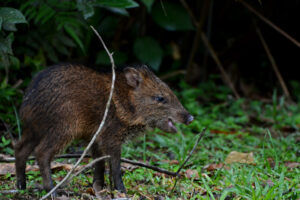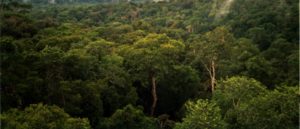 RFID tags, or radio frequency identification tags, aren’t only used for tracking merchandise; they’re also being used to help the environment. Researchers are using these tags to track animals in the wild, which may just help them with conservation efforts.
RFID tags, or radio frequency identification tags, aren’t only used for tracking merchandise; they’re also being used to help the environment. Researchers are using these tags to track animals in the wild, which may just help them with conservation efforts.
The World Wildlife Fund (WWF) has actually used RFID technology in order to track the wild white-lipped peccary in the Amazon rainforest. This pig-like animal that weighs 100 pounds or more can be difficult to track within the lush Amazon, which is why scientists turned toward RFID tags to better understand the movements of these animals.
Why Track the Peccary?
Tracking the peccary was actually part of a five-year study of biodiversity in the Amazon. While these peccaries are not endangered, they travel far and in large numbers. In fact, there can be as many as 400 animals in a single herd. This means that understanding their movements is important to understanding their habitat and how they change the rainforest around them.
Understanding the movements of animals in the Amazon is more important than ever as this stretch of rainforest shrinks over time. Learning about how this ecosystem functions is critical not only for understanding more about the animals within it, but also for optimizing conservation efforts.
How the Peccaries were Tracked
The biologists from the WWF installed salt and mineral licks through the peccaries’ habitat with a wireless RFID reader next to each. After placing tags on the peccaries themselves, using ear tags that would allow them to examine peccaries as they grew, the researchers then sat back and waited.
Each time one of the tagged peccaries approached a salt lick, its ear tag entered the read range of the interrogator. This interrogator recorded the tag ID on its onboard memory and the timestamp of the tag. This, in turn, allowed the researchers to track the movements of the peccaries when they were in the areas where the salt licks were placed.
What the Scientists Did with the Information
The WWF actually used the information they gathered in conjunction with non-RFID research on jaguars, pumas, and parrots in order to see how large of a range these animals needed to survive and thrive. This is especially important to note when creating national parks, since knowing the exact size that a park needs to be can be better for the animals that make it their home.
The Future of Wildlife Tracking
These days, RFID technology has advanced to the point where the technology can be placed in a tiny tag that can be used on birds, reptiles, and mammals. It’s certainly an interesting way this technology can be used, and also shows how these tags can not only help in retail, but can also help in conservation.
To see all of the RFID tags available, check out our website.
